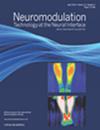帕金森病微电极记录和局部场电位对眼下核的麻醉效应
IF 3.2
3区 医学
Q2 CLINICAL NEUROLOGY
引用次数: 0
摘要
目的:脑深部刺激(DBS)手术中使用的麻醉剂可能会干扰微电极记录(MER)和局部场电位(LFP),从而影响手术目标定位的准确性。本综述旨在确定不同麻醉剂在 MER 过程中对丘脑下核(STN)神经元活动的影响:我们使用医学主题词检索了 PubMed、EMBASE、EBSCO 和 ScienceDirect 数据库。MER 特征分为定量和定性数据类型。定量数据包括爆发指数、暂停指数、发射率(FR)和棘间期。定性数据包括背景活动、爆发放电(BD)和麻醉剂效应。我们还将审阅过的手稿分为描述局部麻醉加镇静(LAWS)的手稿和描述全身麻醉(GA)的手稿,并汇编了麻醉剂对 MER 和 LFP 特征的影响:结果:总共发现了 26 项关于 MER 的研究,其中 12 项使用了 LAWS,14 项使用了 GA。此外,还发现了三项关于 LFP 的研究。我们发现,在使用 LAWS 的情况下,FR 保持不变,但在使用 GA 的情况下,FR 往往较低,而且两组的 BD 都有所降低。个别而言,异丙酚可增强 BD,但最好用于镇静,或在 GA 中将剂量降至最低。同样,小剂量右美托咪定镇静不会干扰 MER。阿片类药物可用作辅助麻醉剂。在 GA 下,挥发性麻醉对 MER 的不良影响最小,最小肺泡浓度为 0.5。右美托咪定麻醉不会影响 LFP,而丙泊酚则会干扰 LFP 的功率:所测试的麻醉剂对帕金森病 MER 中 STN 和 LFP 的影响各不相同;然而,在可控的麻醉条件下,识别 STN 并取得良好的临床效果是可能的。为了让患者感到舒适,在 STN-DBS 中应考虑使用麻醉。本文章由计算机程序翻译,如有差异,请以英文原文为准。
Anesthetic Effect on the Subthalamic Nucleus in Microelectrode Recording and Local Field Potential of Parkinson’s Disease
Objectives
Anesthetic agents used during deep brain stimulation (DBS) surgery might interfere with microelectrode recording (MER) and local field potential (LFP) and thus affect the accuracy of surgical target localization. This review aimed to identify the effects of different anesthetic agents on neuronal activity of the subthalamic nucleus (STN) during the MER procedure.
Materials and Methods
We used Medical Subject Heading terms to search the PubMed, EMBASE, EBSCO, and ScienceDirect data bases. MER characteristics were sorted into quantitative and qualitative data types. Quantitative data included the burst index, pause index, firing rate (FR), and interspike interval. Qualitative data included background activity, burst discharge (BD), and anesthetic agent effect. We also categorized the reviewed manuscripts into those describing local anesthesia with sedation (LAWS) and those describing general anesthesia (GA) and compiled the effects of anesthetic agents on MER and LFP characteristics.
Results
In total, 26 studies on MER were identified, of which 12 used LAWS and 14 used GA. Three studies on LFP also were identified. We found that the FR was preserved under LAWS but tended to be lower under GA, and BD was reduced in both groups. Individually, propofol enhanced BD but was better used for sedation, or the dosage should be minimized in GA. Similarly, low-dose dexmedetomidine sedation did not disturb MER. Opioids could be used as adjunctive anesthetic agents. Volatile anesthesia had the least adverse effect on MER under GA, with minimal alveolar concentration at 0.5. Dexmedetomidine anesthesia did not affect LFP, whereas propofol interfered with the power of LFP.
Conclusions
The effects of the tested anesthetics on the STN in MER and LFP of Parkinson’s disease varied; however, identifying the STN and achieving a good clinical outcome are possible under controlled anesthetic conditions. For patient comfort, anesthesia should be considered in STN-DBS.
求助全文
通过发布文献求助,成功后即可免费获取论文全文。
去求助
来源期刊

Neuromodulation
医学-临床神经学
CiteScore
6.40
自引率
3.60%
发文量
978
审稿时长
54 days
期刊介绍:
Neuromodulation: Technology at the Neural Interface is the preeminent journal in the area of neuromodulation, providing our readership with the state of the art clinical, translational, and basic science research in the field. For clinicians, engineers, scientists and members of the biotechnology industry alike, Neuromodulation provides timely and rigorously peer-reviewed articles on the technology, science, and clinical application of devices that interface with the nervous system to treat disease and improve function.
 求助内容:
求助内容: 应助结果提醒方式:
应助结果提醒方式:


